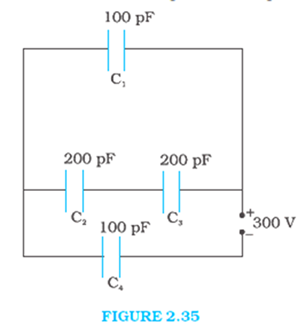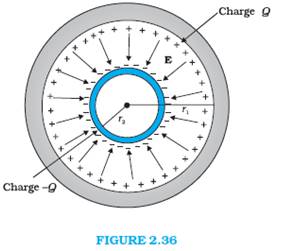Solution of Chapter 2. Electrostatic Potential and Capacitance (Physics Part-I Book)
Chapter Exercises
Exercises
Additional Exercises
16
Show that the normal component of electrostatic field has a discontinuity from one side of a charged surface to another given by 
Where, ![]() is a unit vector normal to the surface at a point and σ is the surface charge density at that point. (The direction of
is a unit vector normal to the surface at a point and σ is the surface charge density at that point. (The direction of ![]() is from side 1 to side 2.) Hence show that just outside a conductor, the electric field is
is from side 1 to side 2.) Hence show that just outside a conductor, the electric field is ![]() .
.



